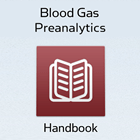Printed from acutecaretesting.org
June 2017
Acid-base and electrolyte disorders in CKD – a review article
Summarized from Dhondup T, Quian Q. Electrolyte and acid-base disorders in chronic kidney disease and end-stage kidney failure. Blood Purification 2017; 43: 179-88.
As the authors of this review article acknowledge, chronic kidney disease (CKD) is a growing public health burden around the world. Recent study, cited by the authors, suggests an estimated 14 % of the US population are now diagnosed with CKD, and
0.2 % have end-stage renal disease (ESRD), the most severe presentation of CKD. (Those with ESRD cannot survive without kidney transplant or regular – usually thrice-weekly – dialysis treatment.)
CKD is associated with disturbance of acid-base balance and a range of electrolyte disorders, reflecting the central role that kidneys play in regulating volume, chemical composition and pH of body fluids. These complications, which are potential causes of significant morbidity and mortality for patients with CKD (including those with ESRD), are the focus of this review article.
To structure the article the authors choose three main topic headings: ”potassium derangements”, ”metabolic acidosis” and ”derangements of bone mineral metabolism”.
Raised plasma potassium (hyperkalemia) is the main focus under the authors’ heading ”potassium derangements”. After briefly reviewing the role of the kidney in maintaining plasma potassium within normal healthy limits, the authors describe hyperkalemia as the most common and life-threatening electrolyte disorder in CKD and ERSD; prevalence increases as CKD advances.
There is discussion of secondary mechanisms (apart from reduced renal function) that could exacerbate or contribute to hyperkalemia in patients with CKD; these include high dietary intake of potassium, transcellular shift of potassium, and drugs that inhibit renal excretion of potassium.
Clinical consequences of hyperkalemia discussed include potentially fatal cardiac arrhythmia and associated ECG changes. Apparently, these characteristic ECG changes are not necessarily present in CKD patients with hyperkalemia.
A particular dilemma highlighted by the authors arises from the comorbidity (cardiovascular disease) that elderly patients with CKD often suffer. Cardio-protective drugs, the renin-angiotensin-aldosterone (RAAS) inhibitors that are prescribed to these patients, may be a contributory cause of hyperkalemia in CKD.
Whilst withdrawal of these drugs may be effective in reducing plasma potassium, removal of the cardio-protection they offer has been shown to increase the risk of cardiovascular-related illness and death in patients with CKD.
Treatment of hyperkalemia in CKD (other than withdrawal of hyperkalemia-inducing drugs) is discussed in some detail by the authors. Emphasis is on clinical trials of two new potassium-lowering drugs. Use of these drugs allows CKD patients to continue with prescription of cardio-protective drugs that might cause or exacerbate hyperkalemia.
Hypokalemia is a much less common electrolyte disorder in CKD than hyperkalemia, but can occur. The authors briefly discuss the mechanisms and consequences of hypokalemia, but most of this section is devoted to studies that have examined the potential for hypokalemia among ESRD patients requiring dialysis; a potential that results from the use of low potassium (≤2 mmol/L) dialysate fluid.
Current recommendations, referenced by the authors, are to avoid the use of low-potassium dialysate in patients with predialysis potassium <5.0 mmol/L.
Under the second main topic heading, ”metabolic acidosis”, the authors discuss in some detail the mechanisms involved in the genesis of metabolic acidosis in CKD. In broad terms these are failure of diseased kidneys to conserve and generate bicarbonate, and failure to excrete excess acid as ammonium ions (NH4+). The authors state that the hallmark of metabolic acidosis in CKD is reduced plasma bicarbonate (<22 mmol/L).
Much discussion in this section is devoted to study evidence demonstrating that metabolic acidosis among patients with CKD is associated with accelerated disease progression and increased risk of all-cause mortality. Studies demonstrating the beneficial effect of correcting metabolic acidosis with administration of oral sodium bicarbonate (NaHCO3) are highlighted.
The authors caution that an upper target plasma bicarbonate level for this therapy has yet to be established. This is important because study has identified a U-shaped relationship between plasma bicarbonate concentration and mortality in CKD, with elevated bicarbonate (>26 mmol/L) being associated with increased risk of death.
The final main section of this review article, ”derangements of bone mineral metabolism”, focuses on detailed discussion of the causes and consequences of raised plasma phosphorous (hyperphosphatemia) that occurs in the later stages of CKD progression. Discussion includes development of secondary hyperparathyroidism consequent on hyperphosphatemia and the bone disorders of advanced CKD that result from secondary hyperparathyroidism.
There is also discussion of the role of hyperphosphatemia in the development of vascular calcification and consequent increased risk of cardiovascular events associated with advanced CKD. Treatment of hyperphosphatemia and CKD-bone mineral disorder (CKD-BMD) are discussed.
The article concludes with relatively brief discussion of other electrolyte disorders that affect CKD patients: the dysnatremias (hypo- and hypernatremia) and the dysmagnesemias (hypo- and hypermagnesemia).
The authors cite 132 references, around half of which were published in the past 5 years. The article thus provides an authoritative and up-to-date account of current understanding of the genesis, clinical significance and treatment of electrolyte and acid-base disturbances in patients with CKD.
May contain information that is not supported by performance and intended use claims of Radiometer's products. See also Legal info.
Acute care testing handbook
Get the acute care testing handbook
Your practical guide to critical parameters in acute care testing.
Download now







